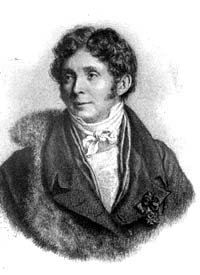The History of 22 Sussex Square
22 SUSSEX SQUARE
1 Thomas Kemp
2 Compte de la Garde
1 Thomas Kemp
No 22 was the house Kemp himself moved into. He installed his sister-in-law, Mrs Ann Sober, next door; his brother-in-law, Philip Laycock Storey, was already established at No 25.
No 22 remained the property of the Kemp family until 1856 when it was sold to Miss Wilmshurst. She turned the house into the school which ultimately was to become Roedean School which still flourishes just outside Brighton today.
From approximately 1888-1924 the house was returned to single ownership accommodation. In 1924 however the property was acquired by St Mary’s School which used it as dormitory accommodation for numbers of its pupils up until 2009 when the school closed.
No 22 has since been sympathetically restored to a single residence.
2 Comte de La Garde, attends a dinner party given by Thomas Kemp at 22 Sussex Square, November 1827

Comte Auguste Louis Charles de La Garde, French poet and man of letters visited Brighton in the autumn of 1827. Before even the facades of the estate were completed and with only one other family resident on the estate, Thomas Read Kemp invited M. de La Garde to dine at the house he had moved into just the month before.
Antony Dale writes of this visit in his Fashionable Brighton 1820-1860 ‘ , quoting from M. de La Garde’s account. “On arrival at Kemp’s house in a fly, the visitor was greeted by a number of servants in rich liveries who were stationed on the doorstep and ran out to meet the carriage on its approach. Inside another bunch of footmen filled the hall. The guest’s name was taken at the door and passed four times from footman to footman before arriving at the drawing room. The room was magnificently furnished and sumptuously carpeted. Silk hangings and gilded fittings abounded. A large crystal chandelier hung in the centre of the room and the walls were covered with pictures by the finest painters. All the guests having arrived and the introductions over, the company went down to dinner.’
The Comte describes the mahogany dinner table and sideboard both laid with silver and .plate. The dinner began with turtle soup and a large number of dishes followed, some prepared in the French style but others, roast beef and fish and ‘vegetables cooked in water’, for instance, were chosen by the majority of guests. The dinner is commended by the Comte, although he is disgusted by the English diners’ habit of applying spices and seasonings at the table to food prepared by a French chef brought over to England at great expense. Champagne was served throughout the dinner and claret with the dessert, reversing the order to which the Comte was accustomed. A toast was raised to the prosperity of the ‘new town’ being developed by the host. Soon afterwards the ladies withdrew, the table cloth being removed, rare wines were circulated in decanters standing in silver stands ‘fitted with four wheels’.
After an hour the men joined the ladies upstairs for coffee in the drawing room where the chandelier had been lit. Music then followed. Kemp’s eldest daughter, Harriet, impressed the French visitor by playing the piano, the harp and singing in several languages. Later some guests danced the quadrilles and waltzes. Kemp then showed M. de La Garde an engraving of the estate as it was planned to be. When the dancing came to an end, a ‘sumptuous collation’ was provided and thereafter the party broke up with guest being conducted to their carriages. M.de La Garde was greatly impressed with Kemp’s bold vision for the estate and he records his delight at English courtesy and hospitality.
Andrew Doig